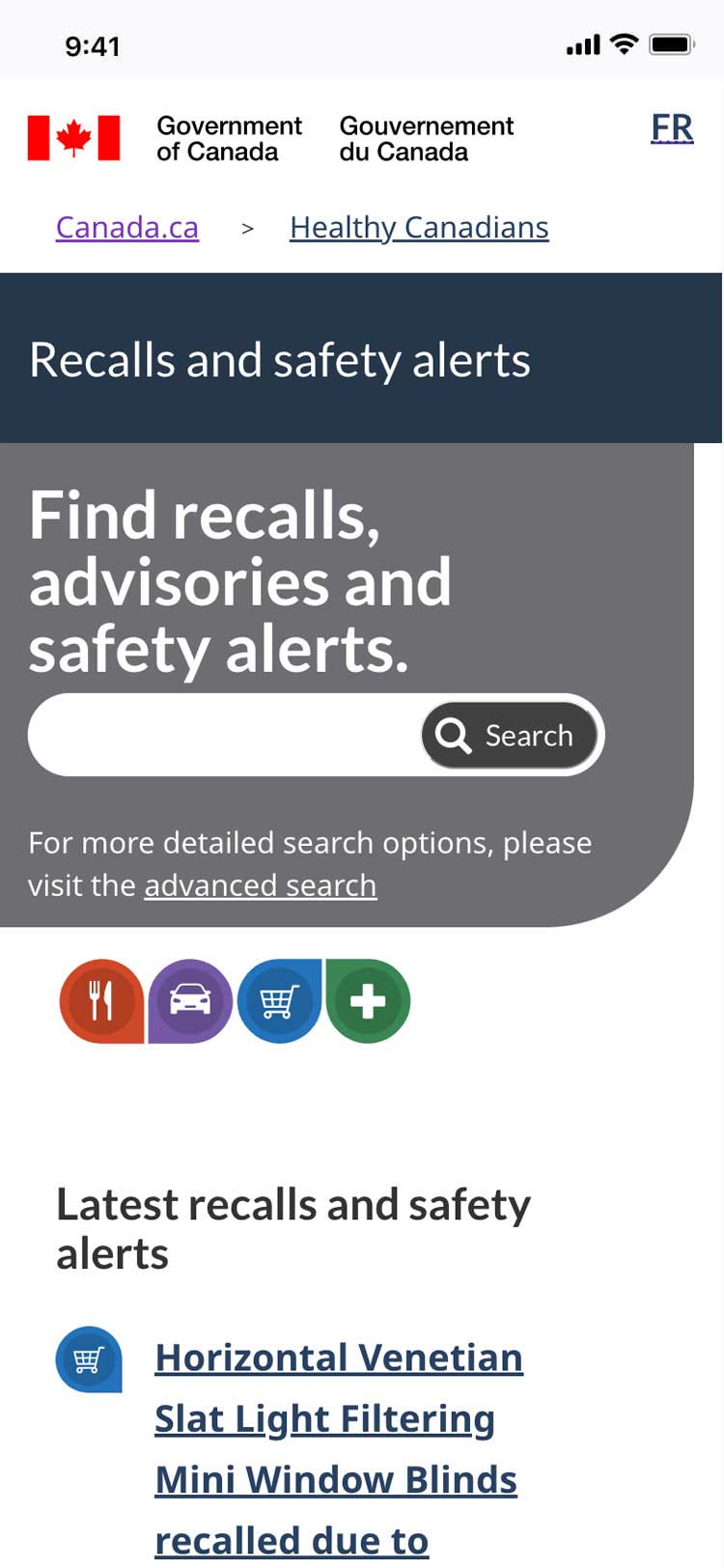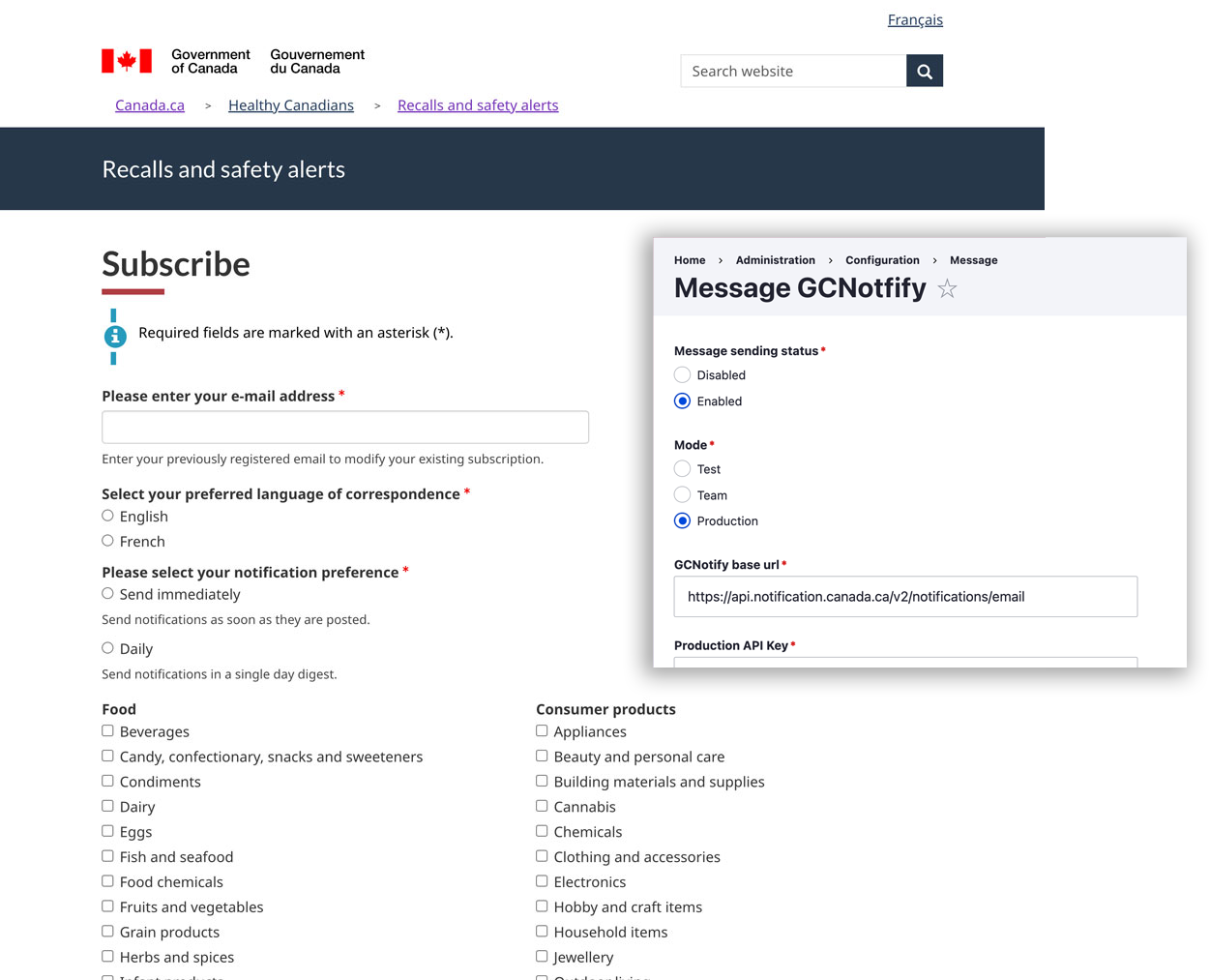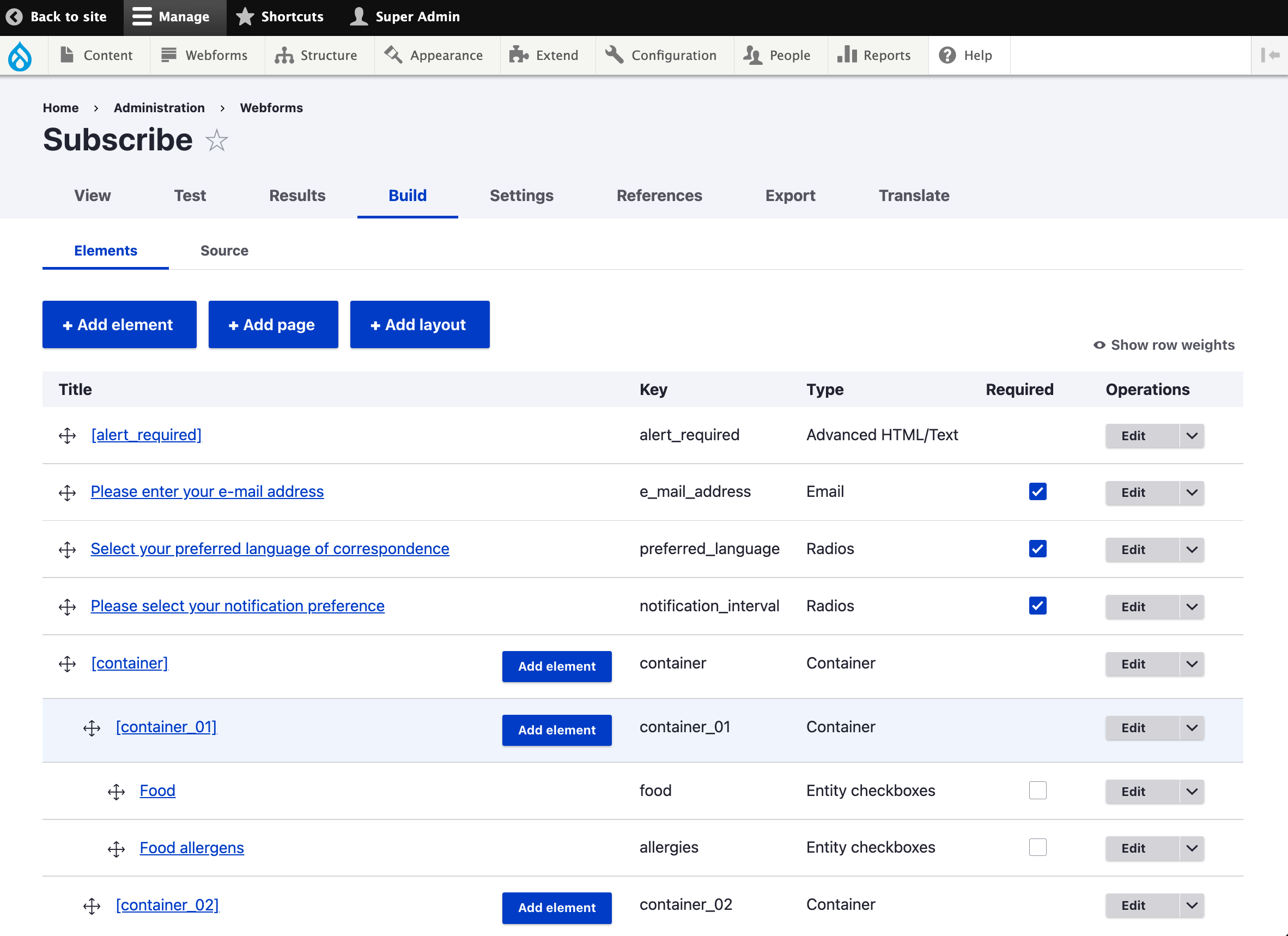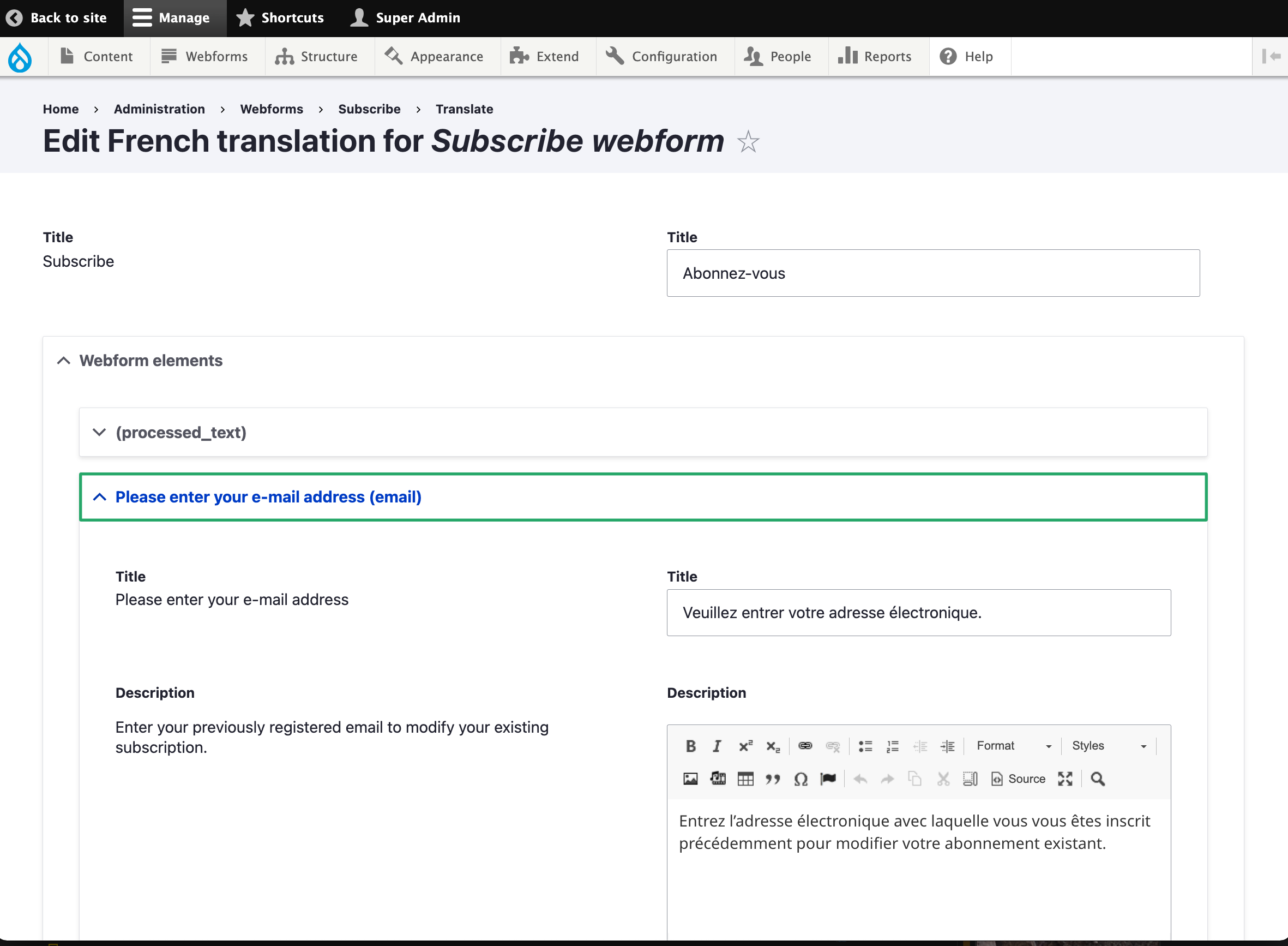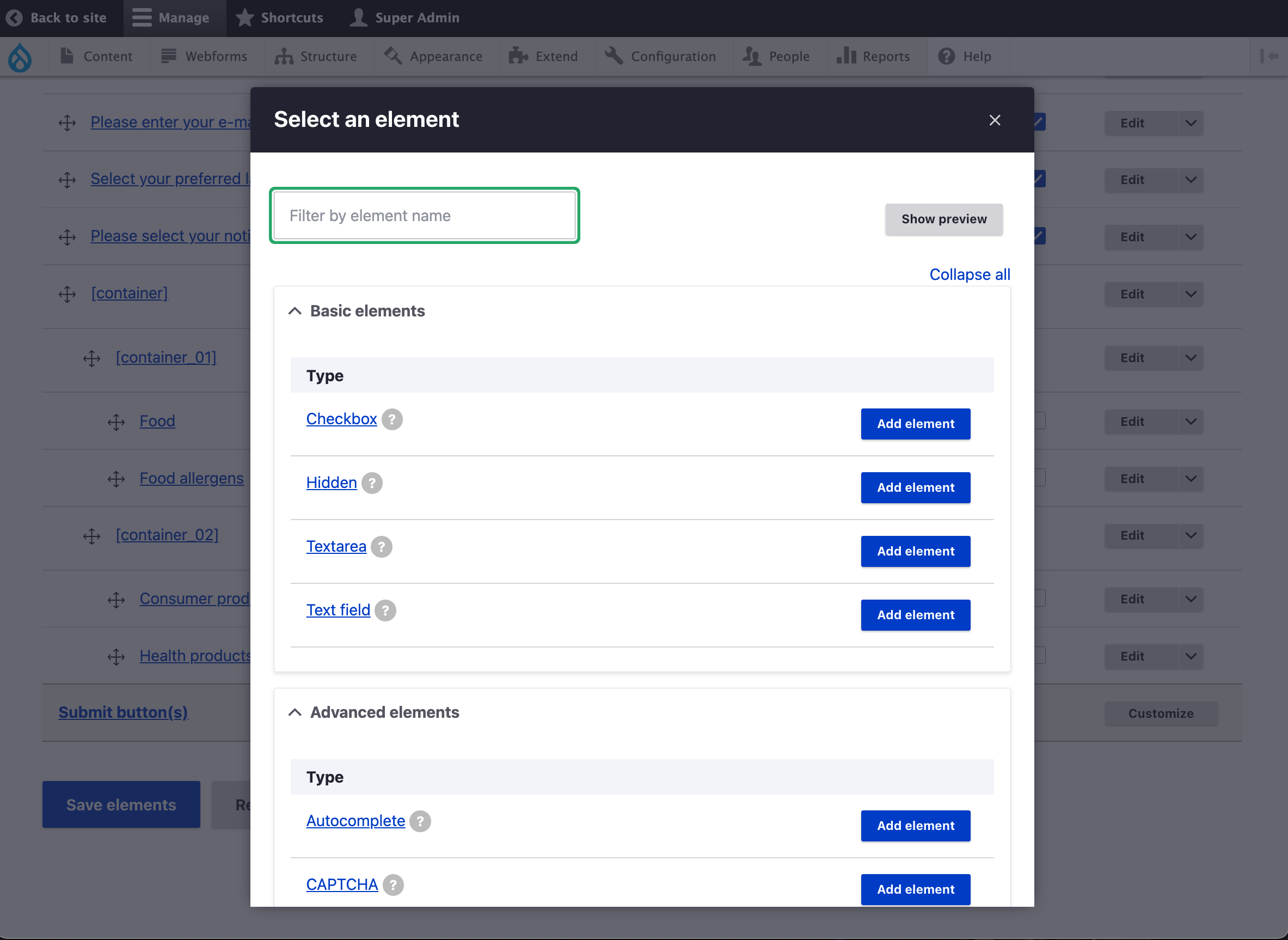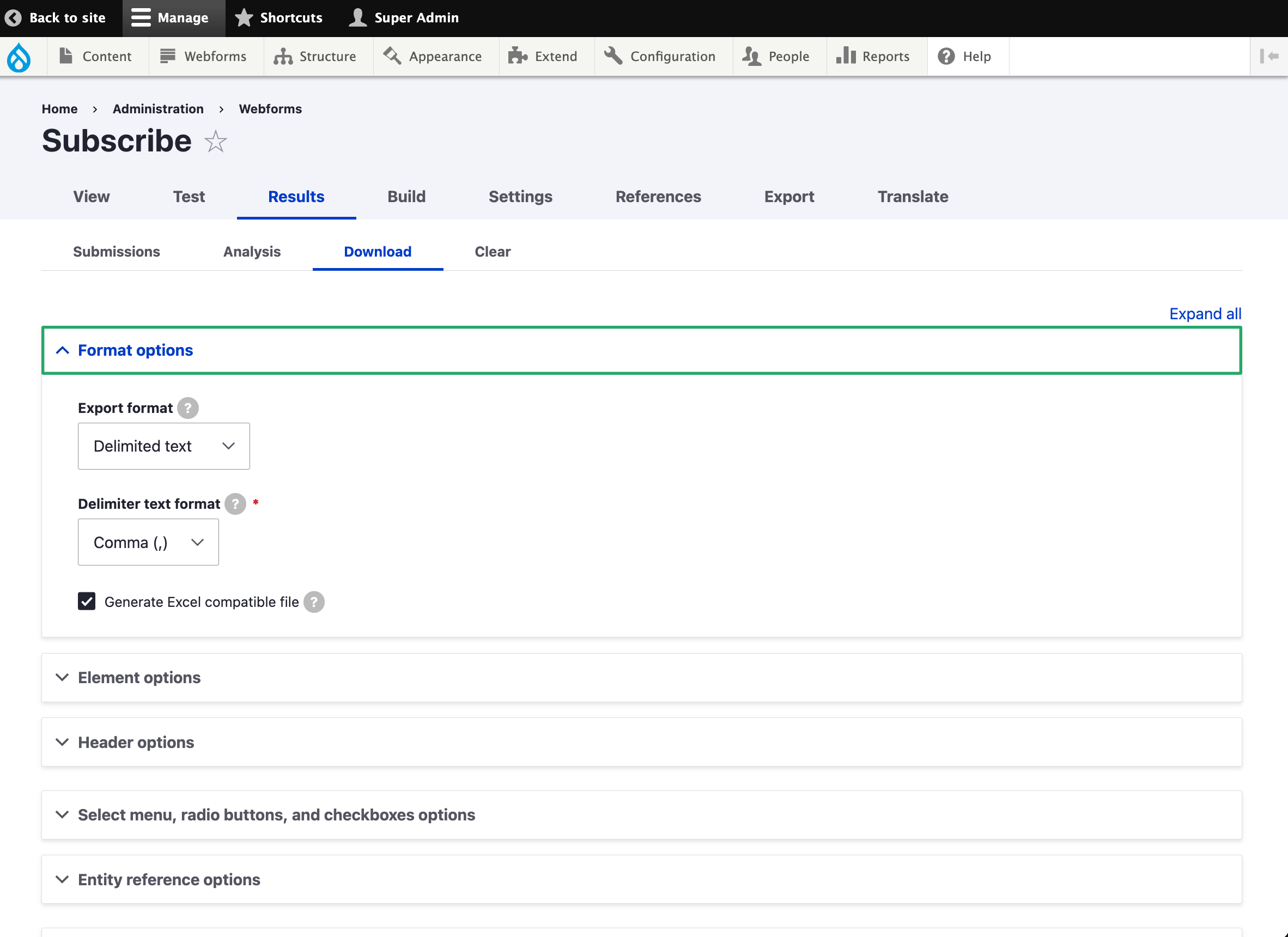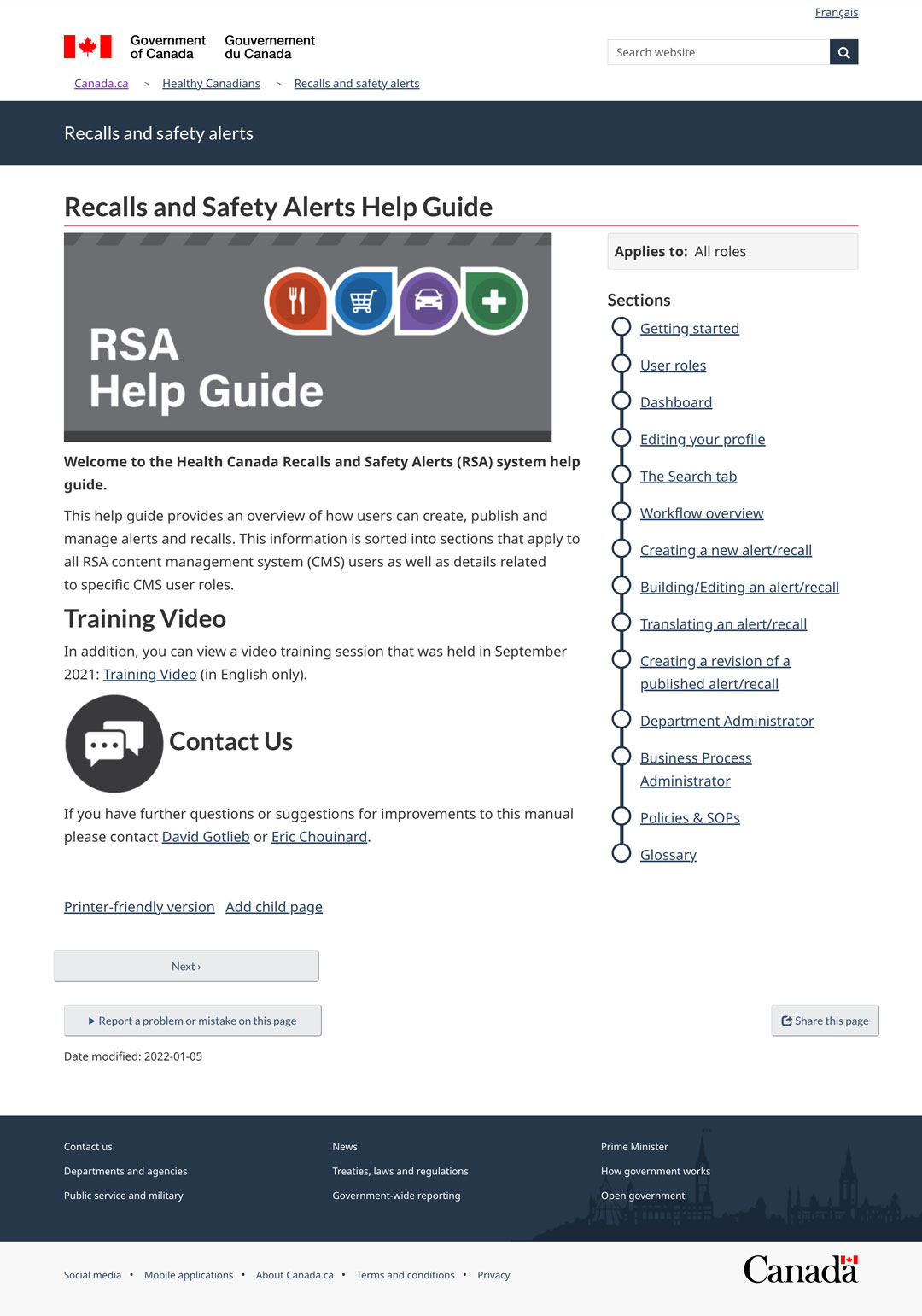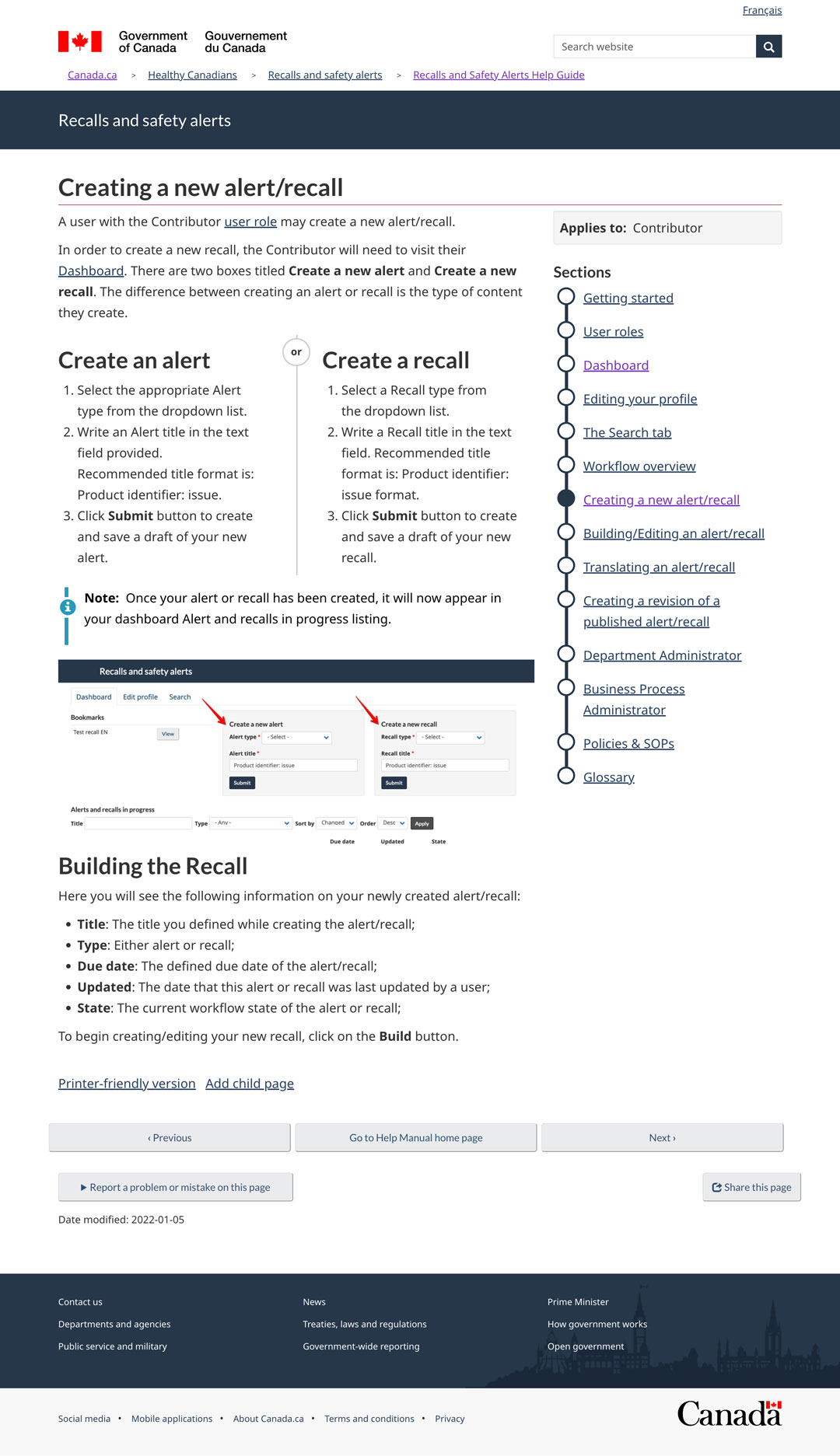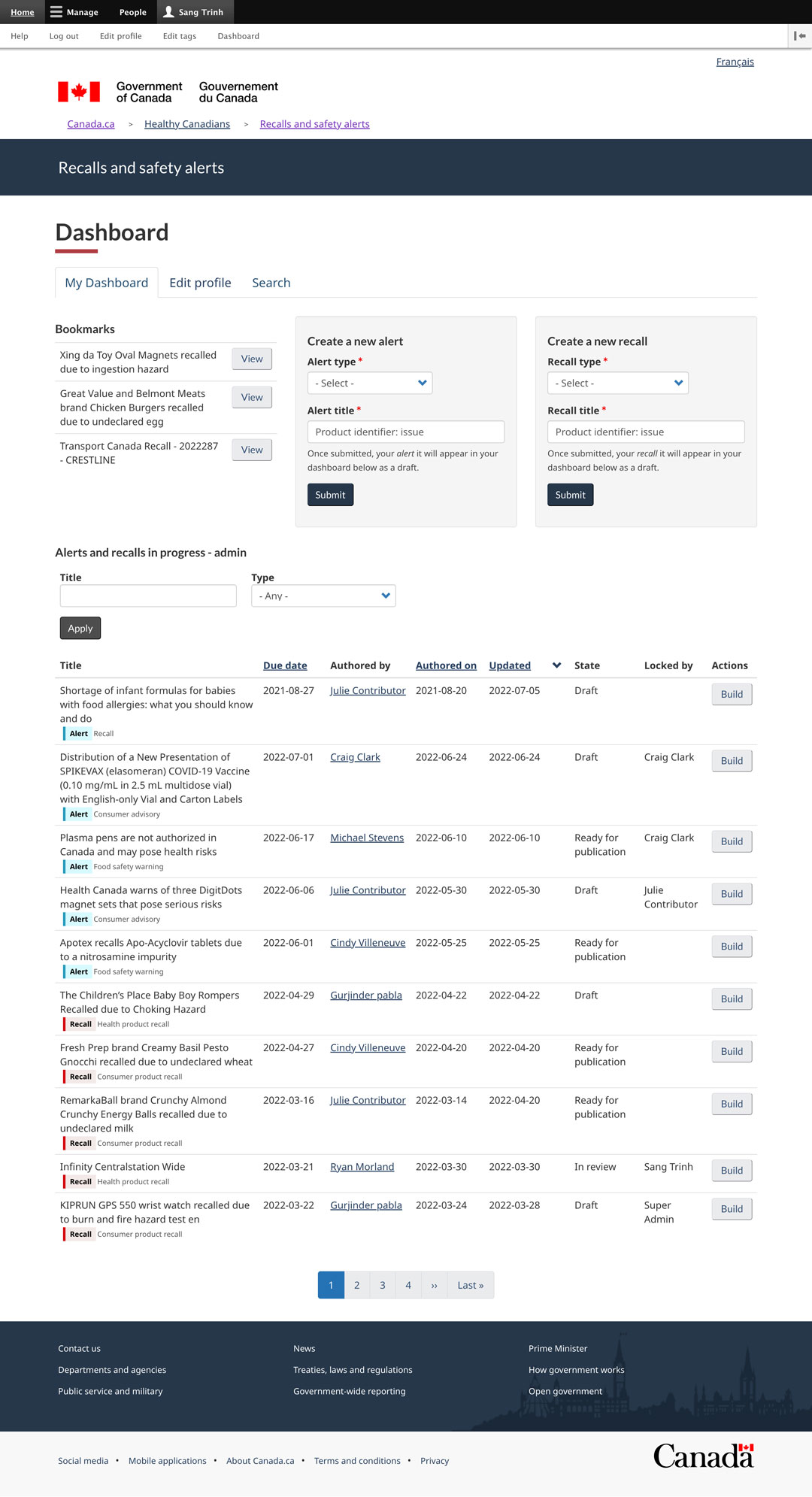Health Canada Recalls and Safety Alerts Modernization
Recalls and Safety Alerts, previously called Recalls and Safety Alerts Management System (RSAMS), is a top service offered by the Government of Canada, ranking number 8 on the list of most consulted GC digital services. It provides access to a comprehensive list of recalls, advisories, and safety alerts. This service includes partnerships between Health Canada, the Canadian Food Inspection Agency (CFIA), Transport Canada (TC) and Environment and Climate Change Canada (ECCC).
In 2019/20, the current RSAMS received almost 7 million page views, not including views received to recall content currently hosted directly on the CFIA and Transport Canada web sites. There are currently approximately 30,000 records in the RSAMS system, with between 1500-3000 records added each year.
Federal Government
Healthcare
Government Website
Online Services
ESG-Friendly & Open-First solution
Consulting
Drupal Development
Web Design & Theming
API Integrations
Content Migration
Hosted Managed Services 24/7
Project Management
Reporting and Testing
WCAG Accessibility



